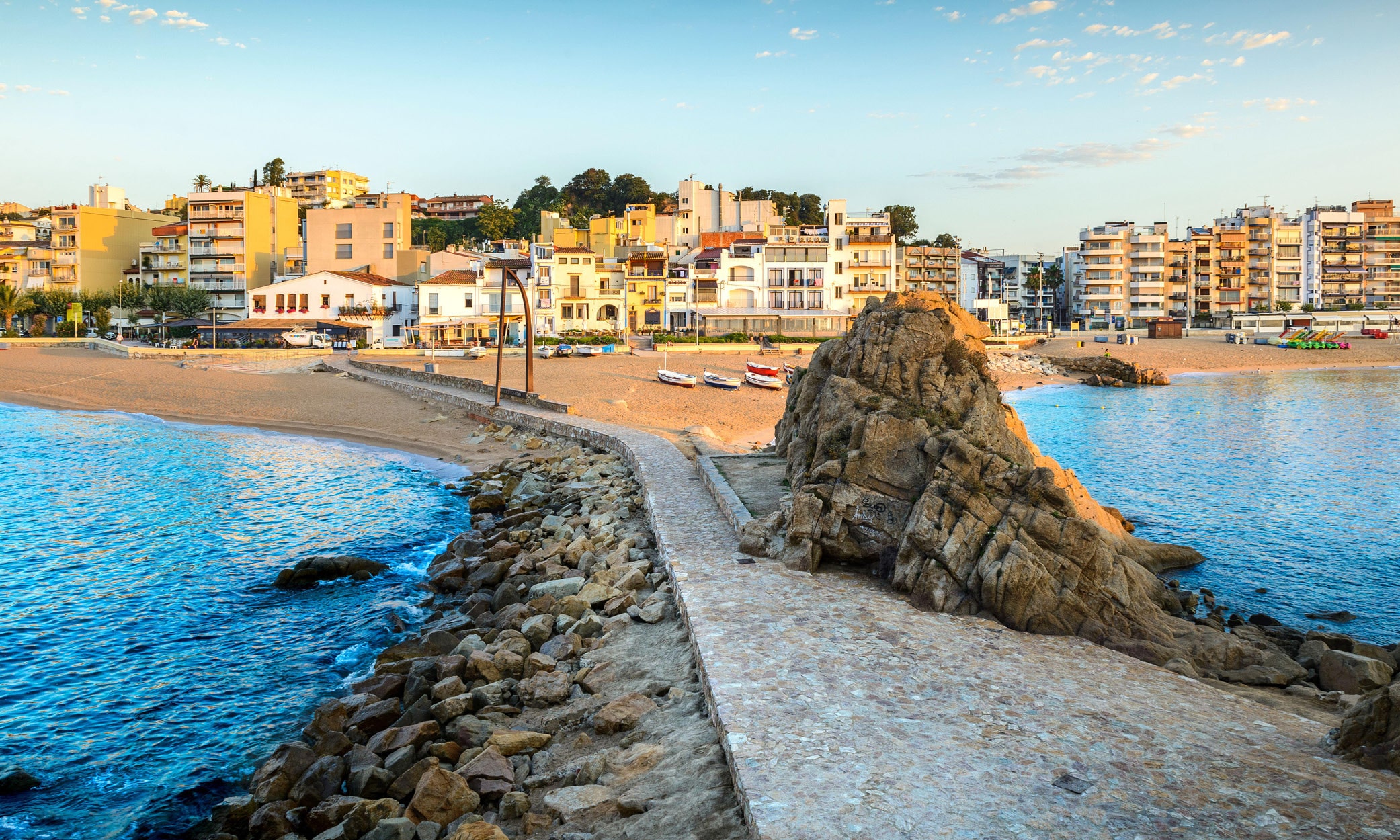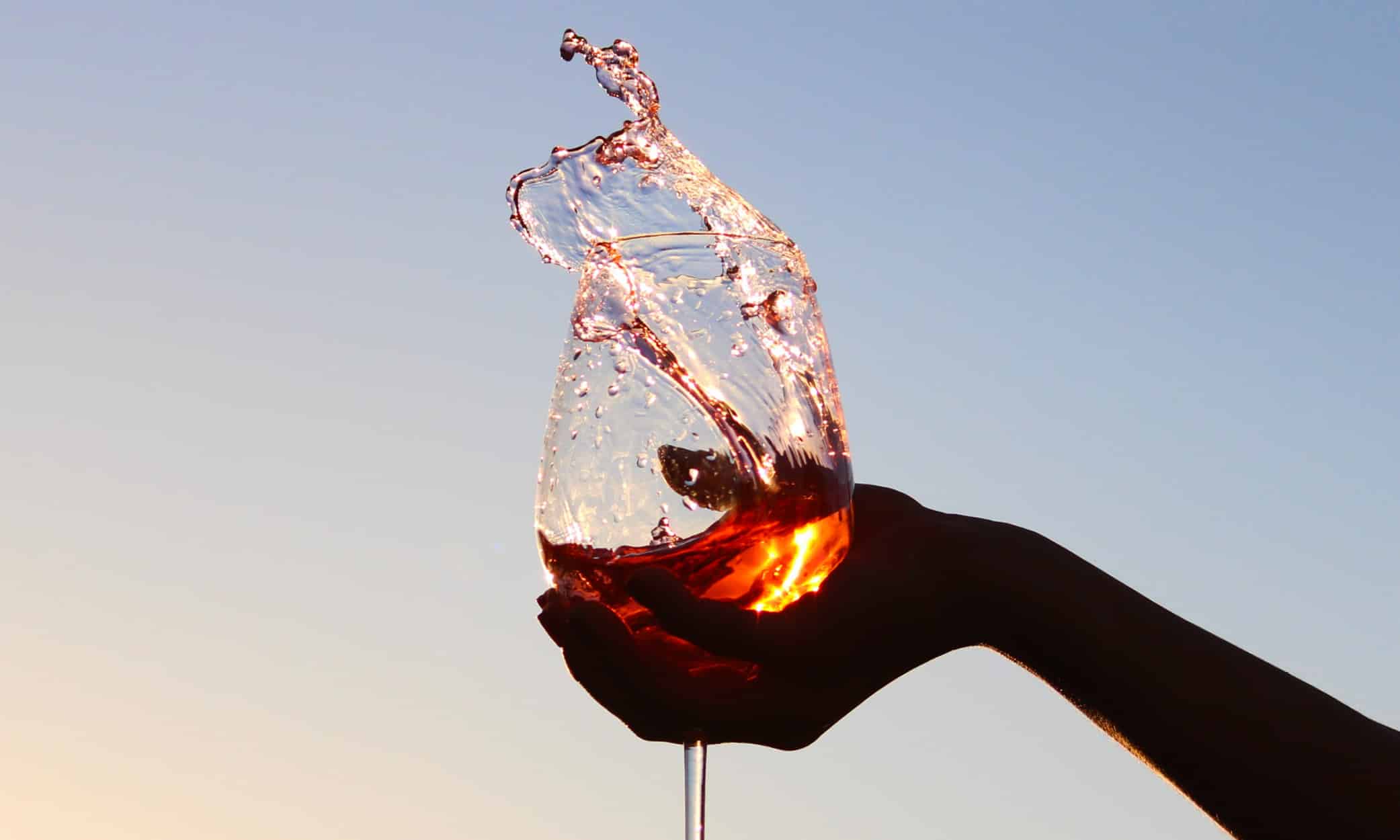
Spain is the number one exporter of wine worldwide, with more acreage dedicated to production than anywhere else. It is also the third-largest producer globally after France and Italy. Despite their popularity nowadays, though, Spanish wines were not traditionally held in as high regard as their counterparts from across the Pyrenees, and before the 1960s, this would have been largely justifiable.
Franco was a teetotaler!
The wine industry, along with just about every other industry in the country, suffered greatly from the Spanish Civil War and WWII that immediately followed it. Franco’s oppressive military dictatorship didn’t exactly help matters either during the rest of the 1940s and 1950s, especially as Franco himself was a teetotaler and prohibited the export of wine from Spain, insisting wine should only be used for church services.
In the 1960s, the same Franco decided to try and cash in on the package tourism market, and Spain was sold as a cheap destination for northern Europeans seeking sun, sea and sand, and they started coming in their droves. Those particular tourists were probably not the most discerning, and the wine (as well as the beer and olive oil) produced for this market was often of a quality to meet their expectations – cheap and cheerful!
Things have improved enormously since then, though. Although some parts of the country do still cater for cheap package tourism, the market has changed considerably since those early days and Spain now ranks as the third most visited country in the world, after France (damn, those pesky French again!) and Mexico. Most visitors nowadays are looking for a lot more than sun and cheap plonk, and it’s just as well because most Spaniards were getting pretty fed up with the hordes of drunken foreign revellers.
The Spanish wine industry, along with the rest of the country, rose to the challenge.
The Good Older Days
Let’s begin with a little bit of history. The Romans’ favourite wine was reputedly from the region around what is today Tarragona, their capital of the lands they occupied in Hispania, as they called it. But the wine had actually been there a long time before the Romans arrived. It is believed that viticulture was already established even before the Phoenicians arrived on the Iberian peninsula around 1100 B.C.E. and then started trading their wine around the Mediterranean from their newly-founded trading port of Gades, modern-day Cádiz. They were the first to plant vines in the nearby Jeréz region, which today gives us sherry.
A few centuries later, their descendants, the Carthaginians, improved on Phoenician winemaking methods during their time of dominance in southern Iberia (guess how the city of Cartagena in Murcia got its name!). Still, it was when the Romans conquered the Iberian Peninsula that wine was brought to a new level, as they brought with them new and improved winemaking styles and methods. Wines from Tarragona and Andalucia were exported, consumed and valued throughout the Roman Empire for centuries.
This golden age of wine would eventually end when the Roman Empire collapsed in the early 5th century. Viticulture declined under the occupying Visigoths, who consumed wine but did not produce it themselves. And so it remained until the arrival of the teetotal Muslim Moors in 771.
One common misconception is that the production of wine was prohibited under Muslim rule, but actually, Christians were not forbidden from producing or drinking alcohol, and the Arabs themselves consumed both the grapes and the raisins they made from them. In fact, after the “dark years” for viticulture under the Visigoths, the quality of winemaking recovered during the centuries of Arabic rule and even flourished and reached new heights, largely thanks to Christian monks who came from all around Europe and introduced new varieties of vines.
Commerce in wine almost disappeared during this time, but when Muslim rule eventually came to an end in 1492, wine production began to surge again. When the Spanish “discovered” and began to conquer the “New World”, the increase in production became exponential as they began exporting wine to their thirsty new colonies. In time, they began producing wine in the New World, too. In some places, they were so successful that it began to impact the Spanish wine market, so much so that one Spanish king, Felipe III, tried banning the further expansion of vineyards in Chile, which thankfully didn’t work out!
Boom to almost bust
Skipping forward a couple of centuries, we come to the age of the Industrial Revolution (roughly 1760-1840), which heralded the arrival of better machinery and equipment for winemaking, amongst other things. While Spanish wine had, by this time, become widely renowned, the Industrial Revolution took place in the countries of Northern Europe but didn’t reach as far south as Spain until much later. Spanish wine exports began to decline and almost certainly would have continued to do so if it were not for something else from Northern Europe that didn’t arrive in Spain either: phylloxera!
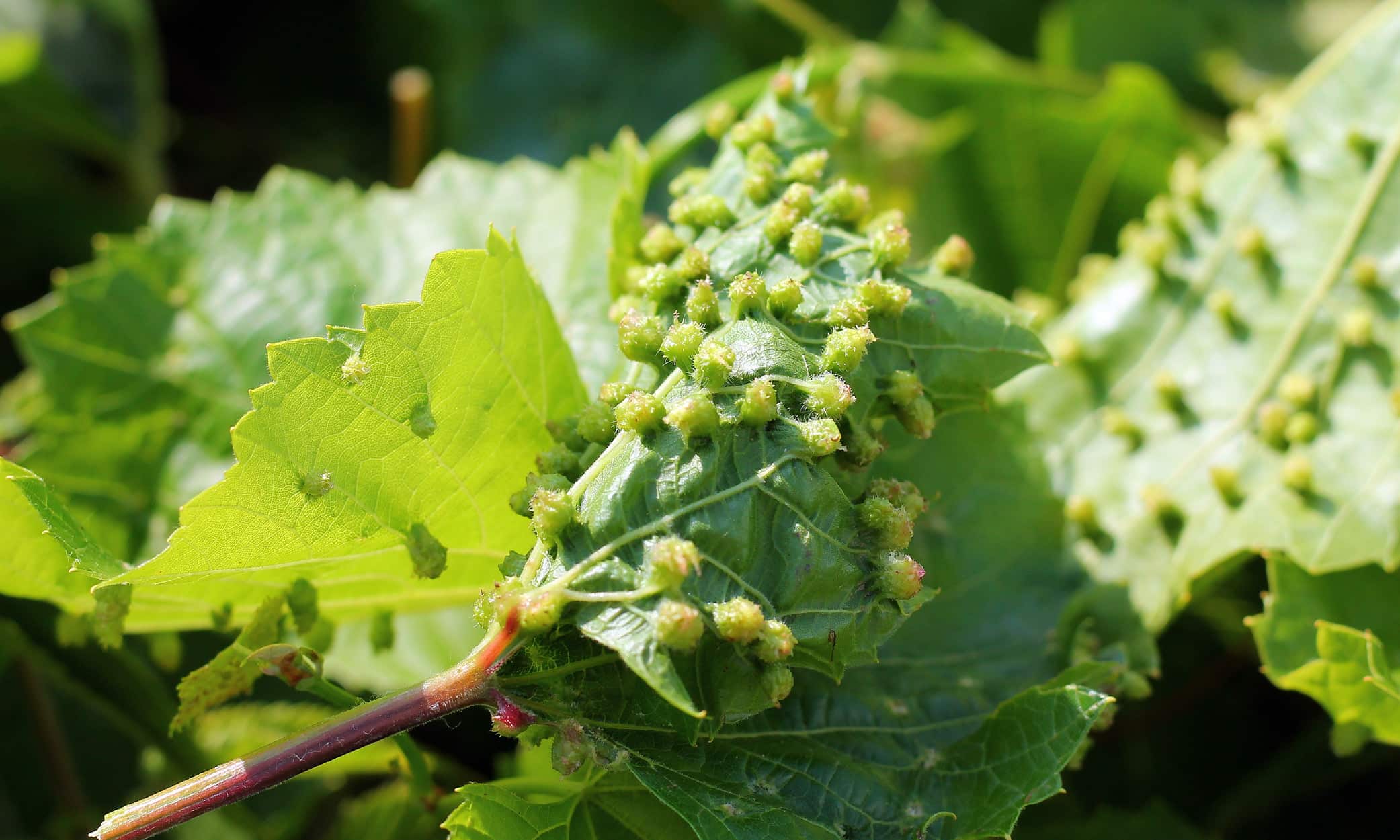
Phylloxera
What is phylloxera, you may ask? Sometimes referred to as “The Great French Wine Blight”, phylloxera is a type of louse that attacks vine roots and in the middle of the 19th century it crippled the wine industry in France especially, but also the rest of the continent. As a result, sales of Spanish wine soared again and became popular all over Europe.
Even though the phylloxera hadn’t managed to cross the natural barrier that is the Pyrenees mountain range, a number of French winemakers did, bringing new vines and more advanced techniques, thus improving the quality of Spanish wine, especially in the Rioja region and parts of Catalunya. By the time the vine louse did make it over the mountains in the early 1900s, a solution had been found, so damage to the Spanish wine industry was not nearly as devastating as it might have otherwise been.
The solution, however, was expensive as it involved grafting the vines onto American roots that were resistant to phylloxera on a huge scale, and many of the French winemakers, rather than incur the enormous costs, instead returned to France. Due to the global economic depression of the early part of the century caused by wars, influenza and general upheaval, many Spanish wine-makers also emigrated to look for a better life elsewhere. Those that remained did away with many traditional species of vine and opted instead for cheaper varieties that produced higher but poorer quality yields, so the resulting wine became more uniform and inferior in quality.
From bad to worse!
The Spanish Civil War from 1936-39 was devastating for the wine industry. Many vineyards went unattended, and others were uprooted altogether and replanted with food-producing crops. As mentioned above, Franco’s military dictatorship that followed the Civil War, not to mention World War II and the collapse of the European market, only made things worse.
During the Franco years, the quality of the wine was usually poor. Grapes were often picked unripe, white and red were thrown together into fermenting pits, and equipment and conditions were typically verging on almost primitive. If it hadn’t been for a small number of innovative individual wine growers in a few regions who endeavoured to maintain standards, it may well have ended up as a lost cause altogether.
Finally, the good part!
And so that brings us back to where we started, Franco’s time. After Franco’s death in 1975 came democracy and greater economic freedom across all sectors of the economy, and the wine industry grew along with it. Spain joined the E.U. (then the E.E.C.) in 1982 and this brought further economic aid to the sector and also led to new legal standards being put in place for wine production. A ban on irrigation that had previously been implemented due to drought was also lifted in 1996, meaning more areas could be used for viticulture and more varieties of the vine were introduced (or reintroduced).
Catalunya
As in the rest of Spain, the majority of the wine produced in Catalunya, about 80%, used to be red once upon a time. When the phylloxera louse had devastated wineries to the north, some of those French winemakers who made their way to Catalunya encouraged the planting of white wine grapes in place of the diseased red vines, and today they make up about 70% of the grape varieties cultivated in the region. (In the rest of Spain, reds only just about outnumber whites nowadays).
During the Spanish “wine revolution” in the second half of the 20th century, Catalan wine-makers such as Torres were to the fore. A bottle of their Mas La Plana cabernet sauvignon red even won at the “Wine Olympics” in Paris in 1979, beating the best wines from France and around the world in its category and really putting Catalan wines on the world wine map.
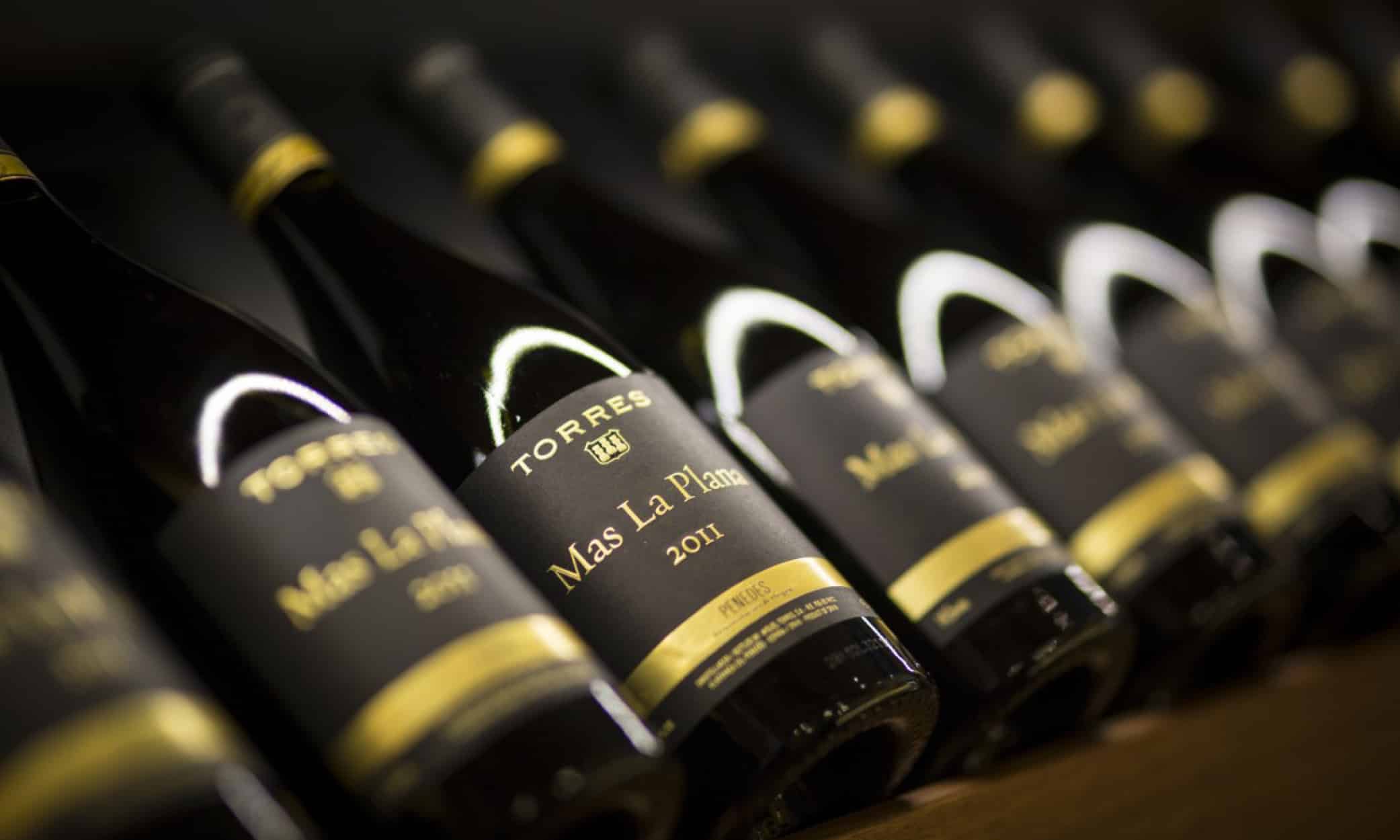
Cava
A Catalan winemaker from the Penedès region named Josep Raventós was travelling around Europe in the 1860s while promoting wines from the Codorníu Winery. After his visits to the French Region of Champagne, Raventós saw the potential for a Spanish sparkling white wine being produced using the same traditional method. After a few years of experimentation, Cava was invented in Penedès in 1872.
Although the Codorníu Winery had been producing still wines since 1551, when Josep’s son, Manuel, inherited the winery in 1885, he decided to switch production completely over to cava. Codorniu is the oldest winery and one of the oldest companies in Spain, and while they do produce some still wines today, they are “still” definitely best known for their sparkling cava. They now have ten wineries, mainly in Spain but also in Argentina and the USA.
Today, over 90% of all cava produced is from Catalunya, and about 95% of that is from Penedès. Outside Catalunya, there are only a handful of cava producers in Rioja and Aragón, and a couple of isolated others in Valencia, Extremadura and Castilla y León.

Wine Regions of Catalunya
Being part of the EU, the labelling system for wine bottles in Spain is very similar to that in other wine countries like France and Italy. The Denominación de Origen (D.O.) in Spain is the equivalent of the Appellation d’Origine Contrôlée in France, for example. This tells you that the wine comes from a particular area and that it conforms to specific, strict rules applicable to that region, including which types of grapes were used.
It’s worth remembering that Spanish wine labels usually place the primary focus on region rather than the grape, so a wine labelled as a “Rioja”, for example, comes from the Rioja region but will not necessarily have been produced using any particular type of grape.
The highest-quality wine regions have a Denominación de Origen Calificada (D.O.C.) label (or D.O.Q. in Catalan), and there are only two in all of Spain thus far; the world-famous Rioja and Priorat from right here in Catalunya. Apart from the D.O. Cava (which is the only Denominación de Origen not to correspond to a specific area but rather a type of wine) and the D.O. Catalunya (which covers any Catalan wines that fulfill the right requirements but do not fall under any of the other D.O.s in Catalunya), there are 10 Catalan D.O. wines:
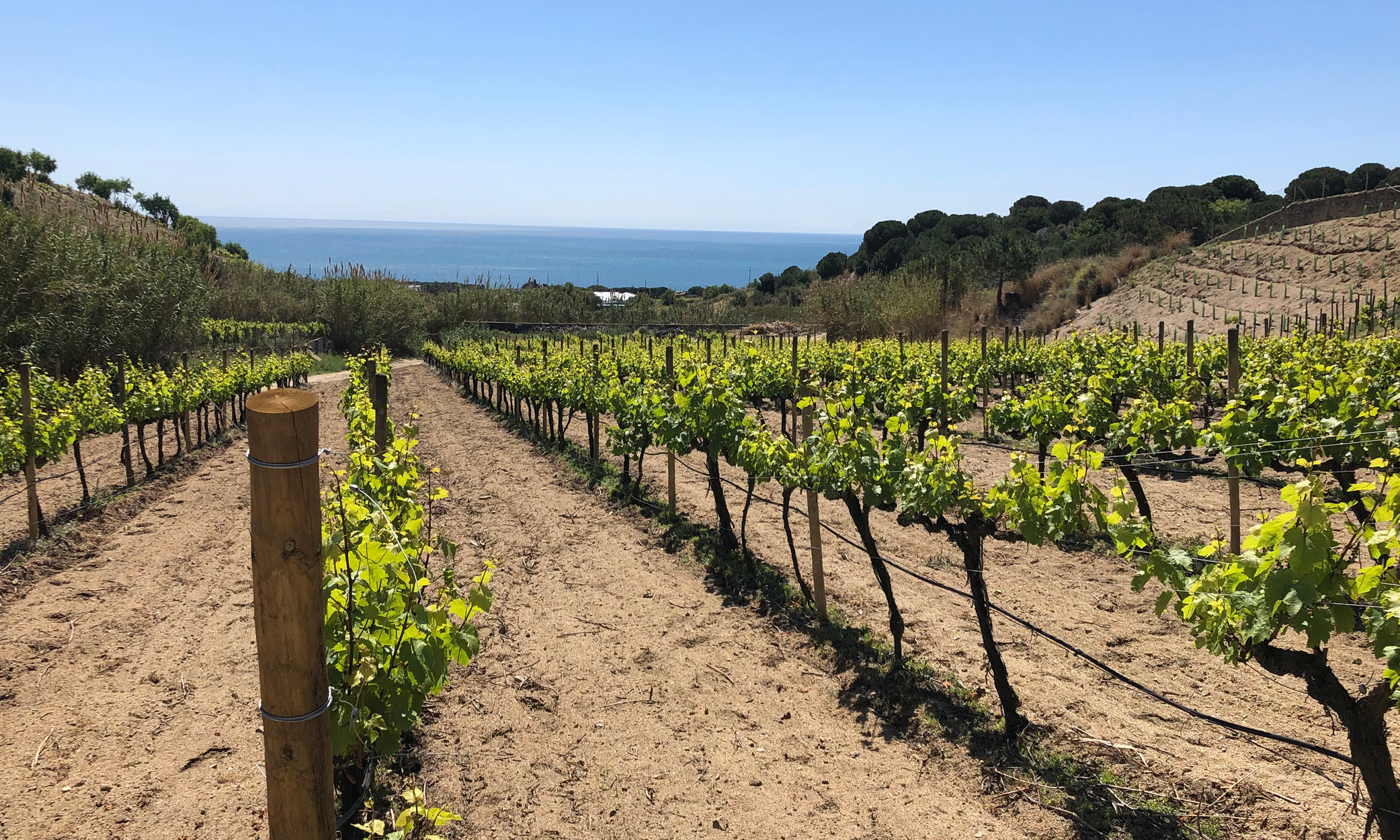
- Alella is a small wine region that mainly produces white wines, with Xarel-lo being its principal grape.
- Conca del Barberà produces mostly white wines, the best known of which is made from the Parellada grape. It also produces cava and some rosé.
- Costers del Segre use a variety of grapes, both native and foreign, to produce mainly full-bodied reds, but also some white and rosé.
- Pla de Bages supposedly derives its name from Bacchus, the Roman god of wine. A very small and relatively new D.O. known mainly for its white wines.
- Terra Alta was formerly known for its full-bodied red wine but has recently gained renown for its Grenache-based white wine, too.
- Although Tarragona was historically known for its fortified red wines similar to port, it now produces red, rosés, liqueurs, and vermút, although most of the production is white wine, including cava.
- Priorat is the only D.O.Q. in Catalunya due to its consistently excellent quality. Their wines tend to be among the most expensive due to the high-quality but low-yield wine their terrain is capable of producing. They are particularly famous for their powerful, full-bodied reds, with their high alcohol content typically made from Garnacha and cariñena grapes. Top Priorat wines can sell for thousands of euros, but you can also find some very fine ones for much more affordable prices.
- Montsant, formerly part of the Tarragona D.O., became its own label in 2001. Surrounding the Priorat D.O., it also produces very high-quality wines but at lower prices.
- Penedès is the biggest of the D.O.s in Catalunya and the main producer of cava but also produces wines of all types using a wide variety of grapes.
And finally, we come to:
D.O. Empordà
This has been our local Denominación de Origen wine on the Costa Brava since 1972, and in fact, it was known as D.O. Empordà-Costa Brava until the name was shortened in 2006. Although we may sometimes get fed up with the Tramuntana wind here, it does help reduce vine diseases and keep frost to a minimum and has even given rise to Empordà wines being called “Wines of the Wind”. In 2022, sales of D.O. Empordà wines topped the 6 million bottles mark for the first time ever, with particular growth in the popularity of their white wines.
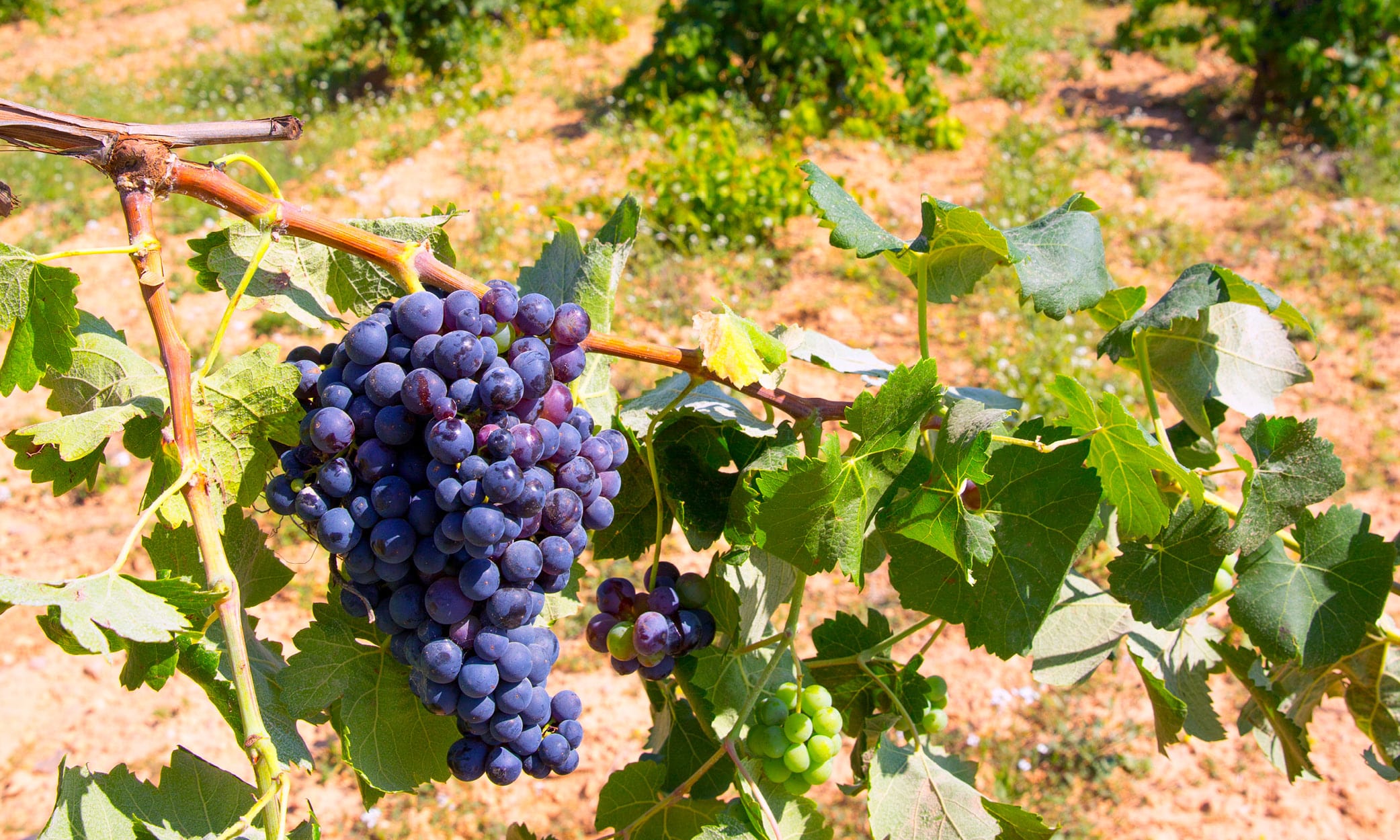
The traditional grapes used for red wine in the Empordà are carignan (samsó in Catalan) and grenache (garnatxa). Still, in more recent times, winegrowers have also introduced foreign varieties such as cabernet sauvignon, merlot, syrah (shiraz), tempranillo and muscat in the production of their reds and also the increasing output of their highly regarded rosé wines (vins rosats).
The White wine grapes used are grenache and macabeu, with lesser amounts of xarel-lo, muscat, and more recently, chardonnay, sauvignon blanc and gewurztraminer. Unique to the region is a naturally sweet dessert wine called Garnatxa de l’Empordà made from an indigenous grape of the same name.
If you’d like to experience the wines of Empordà firsthand, there are wine tours, tastings, events, wine bars, museums and even wine therapy treatments all within easy reach of La Costa Brava! Just check out the D.O. Empordà Wine Route.
For a month every year, around late March and early May (depending on the year) – basically April – the Vívid Wine Festival hosts wine-related events throughout the Empordà region. In their own words: “VÍVID, the month of wine tourism on the Costa Brava, has established itself as one of the country’s benchmark events for wine tourism. During the month of April, the festival offers a selection of the most unique wine tourism proposals that can be experienced on the Costa Brava.” Check out what’s on offer on the Vívid website.
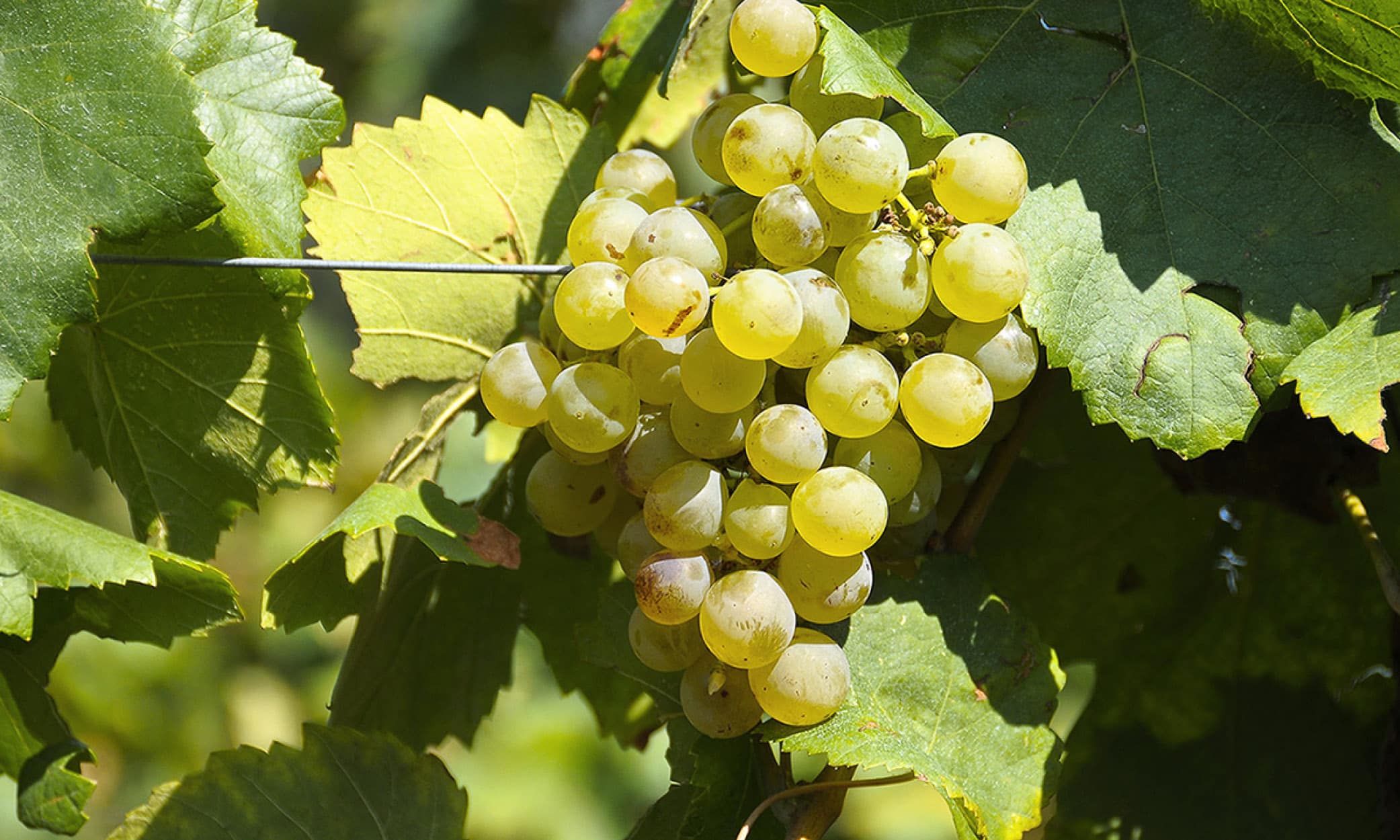
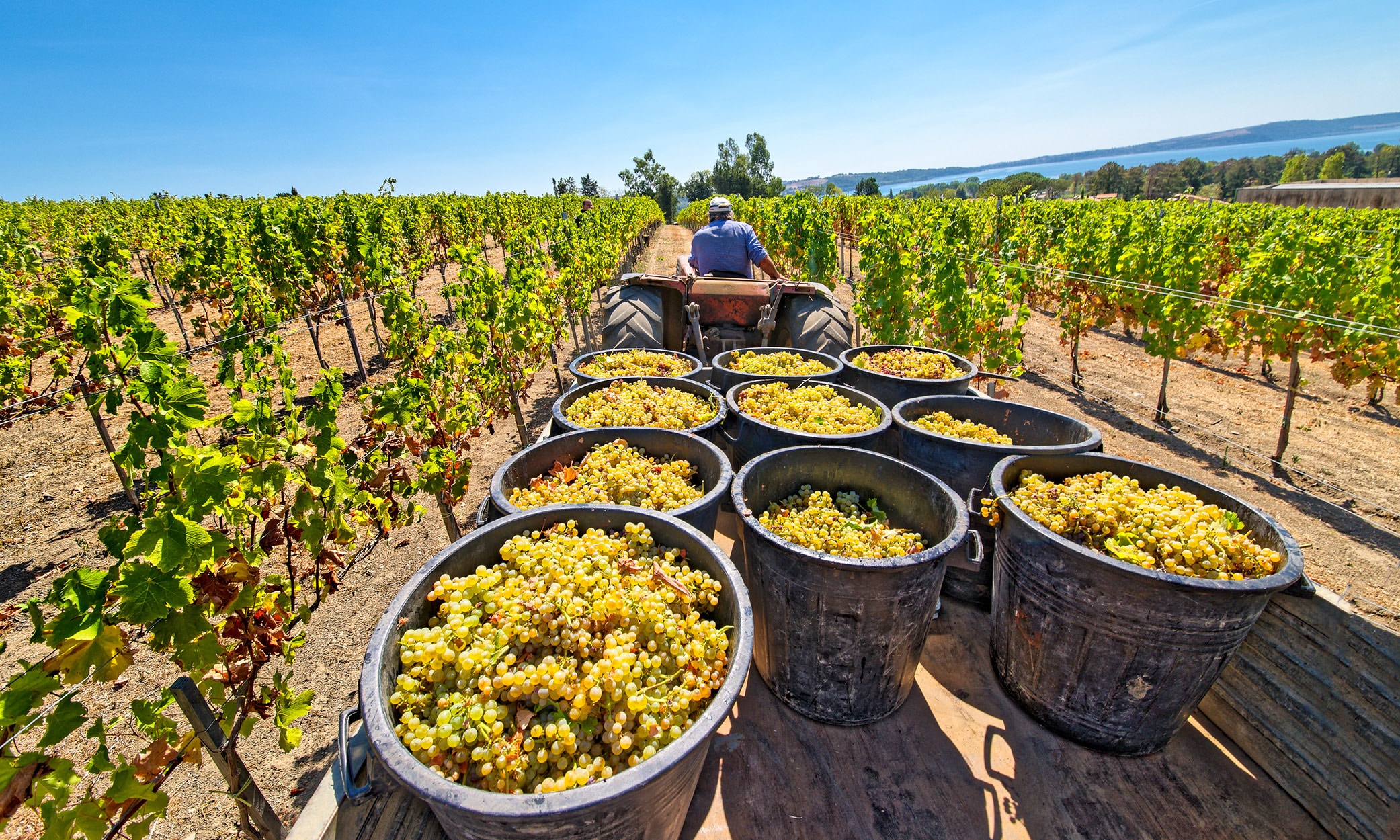
Shopping for wine
Unless you’re already a bit of a wine expert, you might find the vast array of different wines available in your local wine shop or supermarket a bit confusing. One way to make the selection a little easier is to decide what level of quality you are after.
- Vinos de Mesa
At the bottom end of the range are the Vinos de Mesa, or table wines. These wines are cheap and are not obliged to declare their origin, age or grape varieties used in production.
- Vinos de la Tierra
Next are the Vinos de la Tierra, meaning “wines from the land” (from a particular region). Although you can tell where they come from, these wines are not subject to the same rigorous regulations as the D.O. wines. That’s not to say you won’t occasionally come across a decent one, and at worst, you can use it for cooking!
- Vinos de Calidad con Indicación Geográfica (V.C.)
These wines, as well as the grapes used, must come from a specific region, and the winemaking itself, including any ageing, must have taken place in that region, too.
- D.O. and D.O.C/D.O.Q.
Another level up are the D.O. wines, explained above, and then the D.O.C./D.O.Q. wines, which are again of a superior level.
- Vinos de Pago
At the very top of the pyramid are the Vinos de Pago, which are exceptional-quality wines that fulfil and/or surpass all the requirements of a D.O.C. and are typically from a specific winery, estate, or farmhouse.
Obviously, you get what you pay for, and although you might get lucky with a cheap wine from time to time (if you do, keep the label or at least remember the name on the bottle!), for the most part, it’s worth going for at least a D.O. wine, as most of these are still very affordable and quality assured. After that, it’s down to a question of individual taste.
If you feel you might do a bit better with a little professional advice, why not get your hands on the Guide to the Wines of Catalunya, published each year? It comes in both a paper edition and online, is updated every year, and you’ll find all the information you need within!
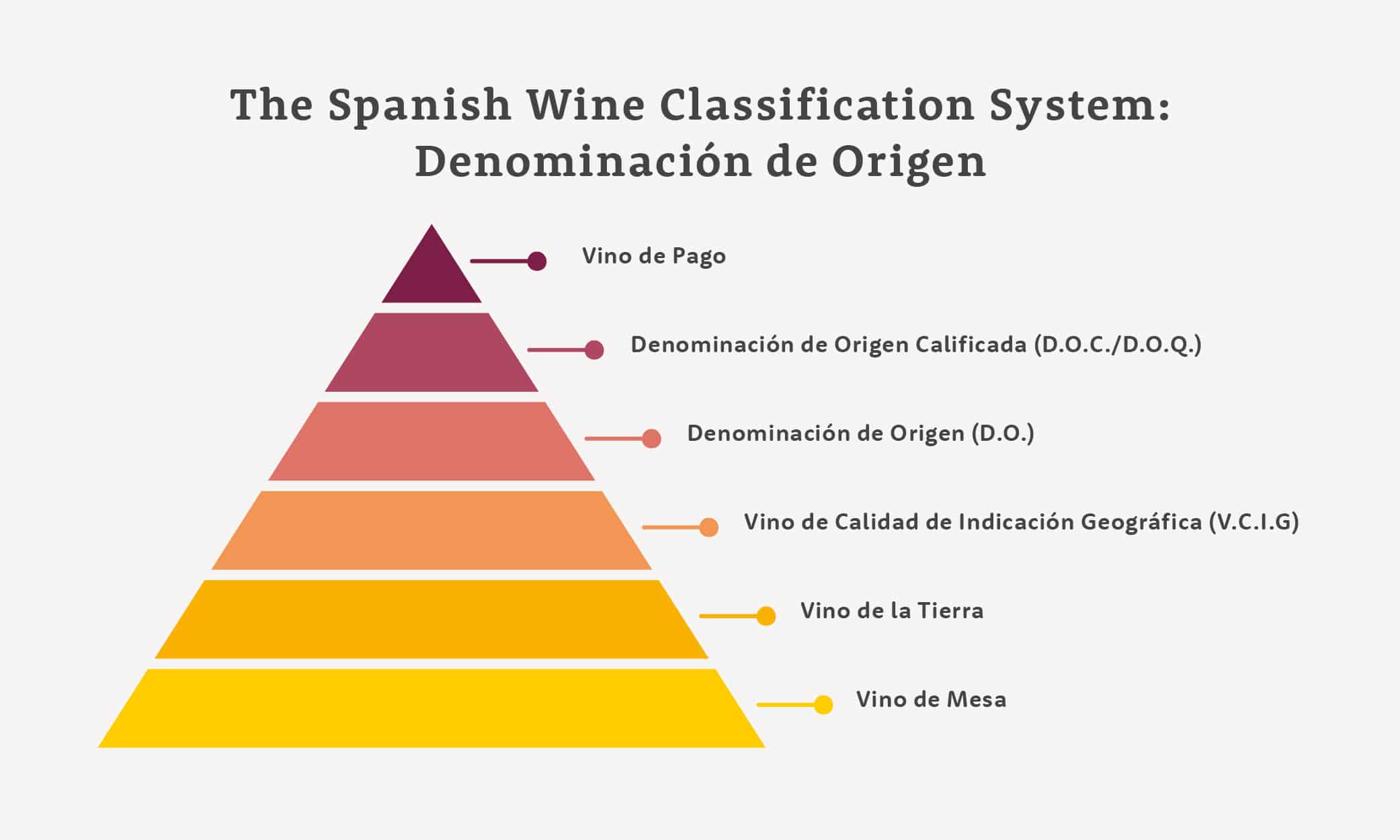
Black wine!
No, there’s no such thing as ‘black wine’, but the Catalan for red wine is “vi negre”, which does translate as “black wine”. In Spanish, that’d be “vino tinto”. For white and rosé wine, there’s little difference between Spanish and Catalan: vino blanco = vi blanc; vino rosado = vi rosat. Note also that in Catalan the plural of “vi” is “vins”…
Non-alcoholic wines
While non-alcoholic beers have been around for quite some time, and have improved significantly over the years, non-alcoholic wines were far less common and, if the truth be told, of poor quality. Thankfully, things have improved enormously, and our aforementioned friends of the Familia Torres here in Catalunya are amongst the pioneers. They have won several awards for their Natureo range of zero-alcohol wines, as well as for the 0.0% version of their already world-famous Sangre de Torre. Great news for designated drivers and non-drinkers in general!
Wine = love
We’ll leave you with a little anecdote. The same Sanskrit word, Vana, is the origin of both the Roman name for the goddess of love and beauty, Venus, and the word for wine, vino.






